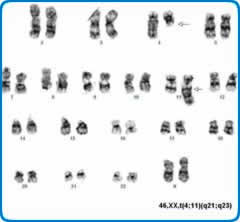 Investigative techniques: Morphology/Cytology
Investigative techniques: Morphology/Cytology
Consideration of the clinical information, blood count results and conventional light microscope morphology of marrow or blood helps to determine the most appropriate panel of investigations form a number of techniques.
Investigative techniques: Flow Cytometry
Provides a method of rapidly enumerating and characterising the antigen expression of cells in suspension using a panel of antibodies labelled with florochromes.
In the haematopathlogy field the technology can be used to distinguish chronic lymphoproliferative disorders and separate these from reactive states; define acute leukamias, identify prognostic markers and monitor minimal resisdual disease; count specific cells types and identify condition associated with aberrant antigen expression.
Investigative techniques: Histopathology
The assessment of fixed tissue prepared as tissue sections is used for the examination of lymph nodes, marrow trephines as well as potential tumours from any body site. Histopathology of lymph nodes is the best method to diagnose and classify lymphoma. Fresh node sent to the laboratory allows the use of flow cytometry to facilitate the diagnosis. Frozen, fixed or paraffin embedded can be assessed by morphology and immunohistochemistry. If appropriate clonality of lymphoid populations can be assessed by IgH and TCR gene rearrangement or FISH on paraffin embedded tissue can identify characteristic chromosome translocations.
Investigative techniques: Cytogenetics
Conventional cytogenetics requires the culture of cells to provide metaphases. For this reason it takes longer to produce results than some other technologies but is a well-established technique able to provide results that are critical in the classification and prognostication of haematological disorders.
Investigative techniques: Fluorescence in-situ hybridisation (FISH)
FISH provides a method to identify changes that help define or provide prognostic information for lymphoid and myeloid disorders. The ability to use metaphase or interphase preparations is powerful and results are confirmed by subsequent conventional assessment whenever possible.
Investigative techniques: Molecular Genetics
The use of sensitive molecular techniques to assess DNA and RNA provide important and evolving tools. A range of techniques may be used for identifying mutations or molecular markers for diagnosis, prognosis and monitoring response to therapy and remission status. Examples of technologies used are qualitative and quantitative polymerase chain reaction assays, fragment analysis, methylation assays, and direct sequencing. Increasingly molecular ghenetic tests are moving across to next generation sequencing (NGS) technologies which allow the parallel investigation of multiple genes at increased sensitivity and resolution.
Investigative techniques: Whole Genome Analysis (WGA)
Following on from the 100K Genomes Project patients with acute leukaemia or any childhood patient with an Haematological cancer will be able to access WGA. WGA is an incredibly powerful technique which uses NGS to enable the simultaneous investigation of molecular genetic, FISH and cytogenetic diagnostic targets in a single, high resolution, assay. WGA requires simultaneous assessment of tumour (somatic) and normal (germline) material and therefore provides the additional benefit of identifying germline changes which may be contributing to the patient’s clinical presentation or have implications for treatment and management.
